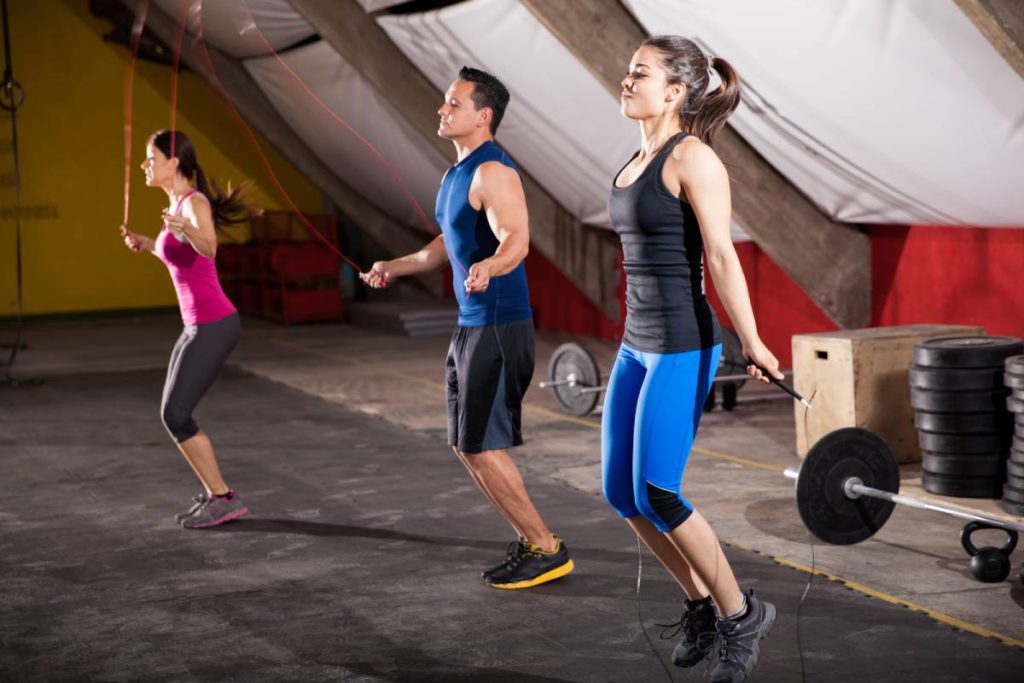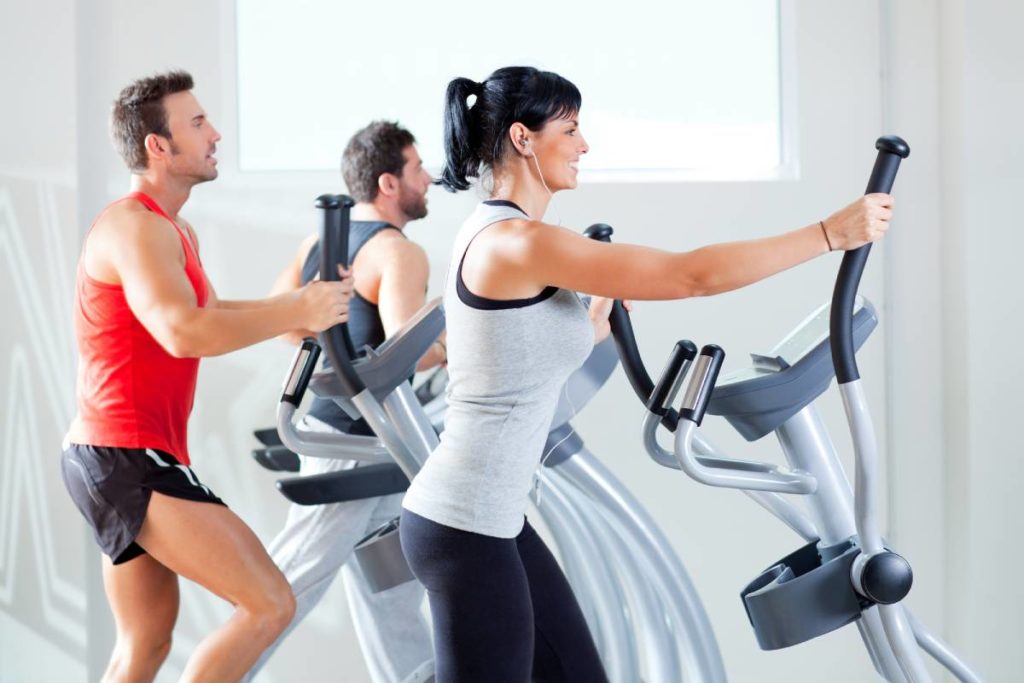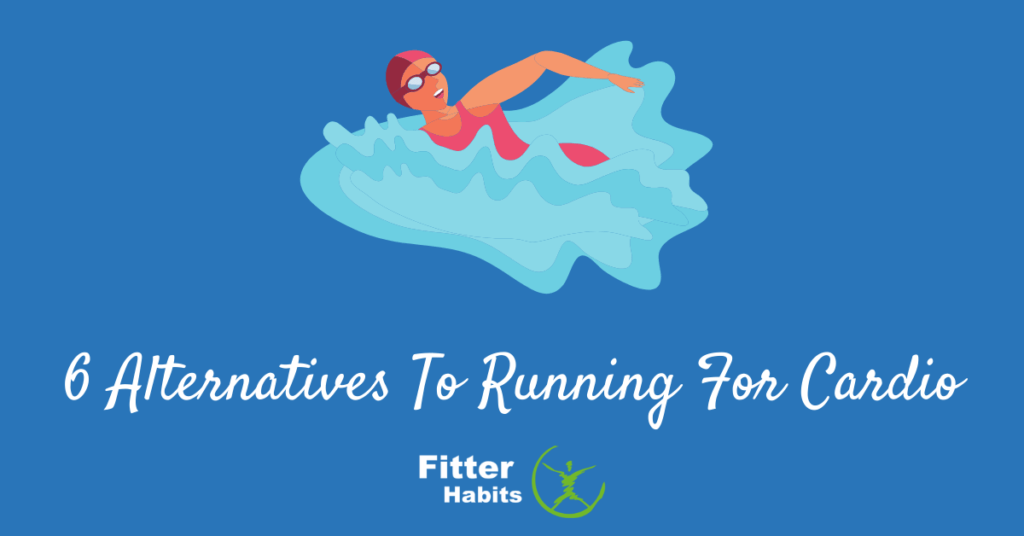We know you love to run. Sometimes, however, you need alternatives to running for cardio to rehab an injury or give your joints a break. We’ve got you covered.
Contents
1. HIIT Training

High Intensity Interval Training sessions can seem deceptively easy at first glance. During a HIIT session, you go all-out with a certain cardio exercise for a short period of time, followed by a short period of rest (this is also known as tabata training). You then repeat the circuit a predetermined number of times.
HIIT training spikes the heart rate and can help train your body to push through tough speed workouts — or to stay strong as you approach the finish line at the end of a tough race. HIIT cardio workouts are known for boosting aerobic fitness, increasing cardiovascular capacity, and allowing you to get a great cardio cross-training workout in a short period of time.
HIIT workouts are a great way to incorporate strength training, bodyweight exercises, and cardiovascular exercise into one workout. Whether you’re working to increase your running speed or you just want to switch up your cardio, HIIT workouts might be exactly what you’re looking for.
2. Swimming

Swimming is a fantastic full-body workout that allows you to target different muscles than you would during a run. Whether you dive into the pool and swim laps at a controlled pace or decide to push yourself to max speed, swimming is one of the best low-impact running alternatives for people who are dealing with joint issues.
You may find that pushing yourself in the pool easily translates to both weight loss and improved speed on dry land. If plyometrics and circuit training are too tough on your body, swimming may be the perfect low-impact option for days when you’re not running.
3. Jump Rope Intervals

Jumping rope is an easy, fun, incredibly effective way to boost your cardio fitness at home. Switching up your intervals, jumping speed, and even your location can keep jumping rope exciting. Kicking up the speed can give you a cardiovascular endurance boost that can make a world of difference when it comes to staying strong during long runs.
While some tech-savvy jump ropes count your jumps for you, all you need is a good rope and a stopwatch to get a great workout. You might be surprised at how quickly your calves and other lower body muscles catch fire during a jump rope workout. Be sure to stretch before and after your workout to ensure that you aren’t too sore for your next run.
4. Cycling

At-home cycling classes are all the rage right now, but you don’t have to shell out for a pricey stationary bike to enjoy the benefits of cycling. Getting outdoors for an old-fashioned bike ride can give you the same benefits as getting outside for a run — without the repetitive joint stress.
If you’re rehabbing an injury or just need a low-impact cardio activity, cycling can allow you to push your limits while still taking it easy on the joints.
Cycling outdoors can also be a great boredom buster if you’re used to covering the same area when you run. On a bike, you can easily cover 12 miles each hour, allowing you to check out some new scenery in your area.
If you prefer to cycle indoors, spin classes (both at-home and in-gym) offer a fun environment to burn calories, ignite the muscle groups in the lower body, and enjoy some healthy competition with others in the class.
5. Kettlebell Circuits

Kettlebells have become increasingly popular in recent years, and for good reason. A kettlebell workout works both the upper body and lower body and can give you a great cardio calorie burn. Incorporating kettlebell workouts into your schedule can help build your muscles, helping you gain the speed and endurance that you want before race day.
Kettlebell circuit training workouts are relatively safe when performed correctly. If you’ve never worked out with a kettlebell before, it’s a smart move to learn the basics from a professional to help you avoid injury.
Reach out to a personal trainer at your gym to learn more about kettlebell basics classes that allow you to learn the ropes.
6. Elliptical Machine

The elliptical machine can be a fun and simple way to get a cardio boost when you’re at the gym. These machines allow your lower body to glide, guided by the machine. If your joints are having a tough time managing the high impact that running has on the joints, the elliptical can be a great alternative.
A word of caution: be sure that you don’t hold on to the handrails of the elliptical machine. Doing so makes your workout much easier, and can lower your overall cardio burn.
Final Word on Alternatives to Running for Cardio
If you need a break from running, are rehabbing an injury, or are looking to step up your running speed or endurance, cross-training is a smart move. Pull from the options above to ensure that your workouts are well-rounded and push your body in new ways.
FAQs on Alternatives to Running for Cardio
Can doing other types of cardio make me a better runner?
Definitely — workouts like swimming, cycling, and HIIT training can all contribute to your overall strength and cardio fitness levels, giving your running a boost.
How can I get a good cardio workout at home?
Can’t or don’t want to head to the gym? Check out HIIT workouts on YouTube, or get outside with a jump rope. You’ll be able to work up a great sweat without ever leaving the house.



